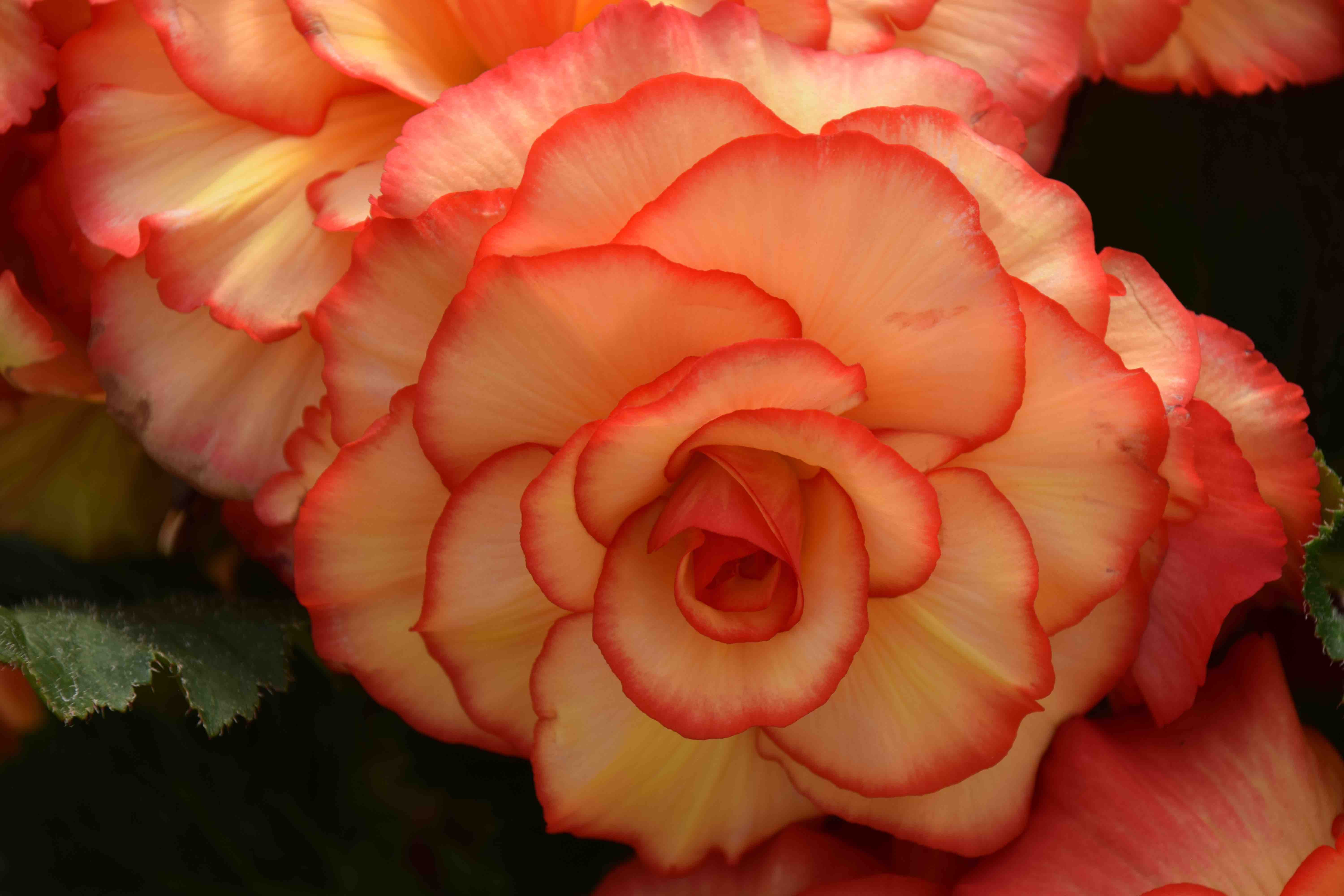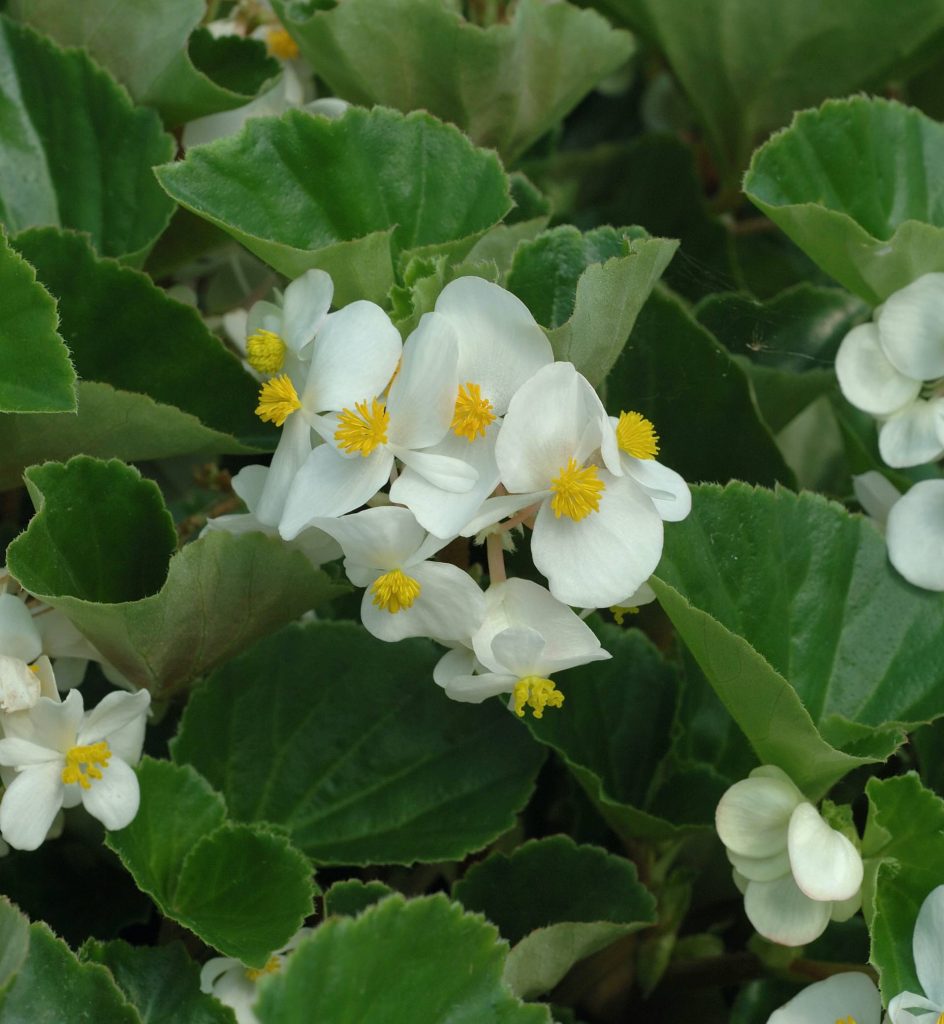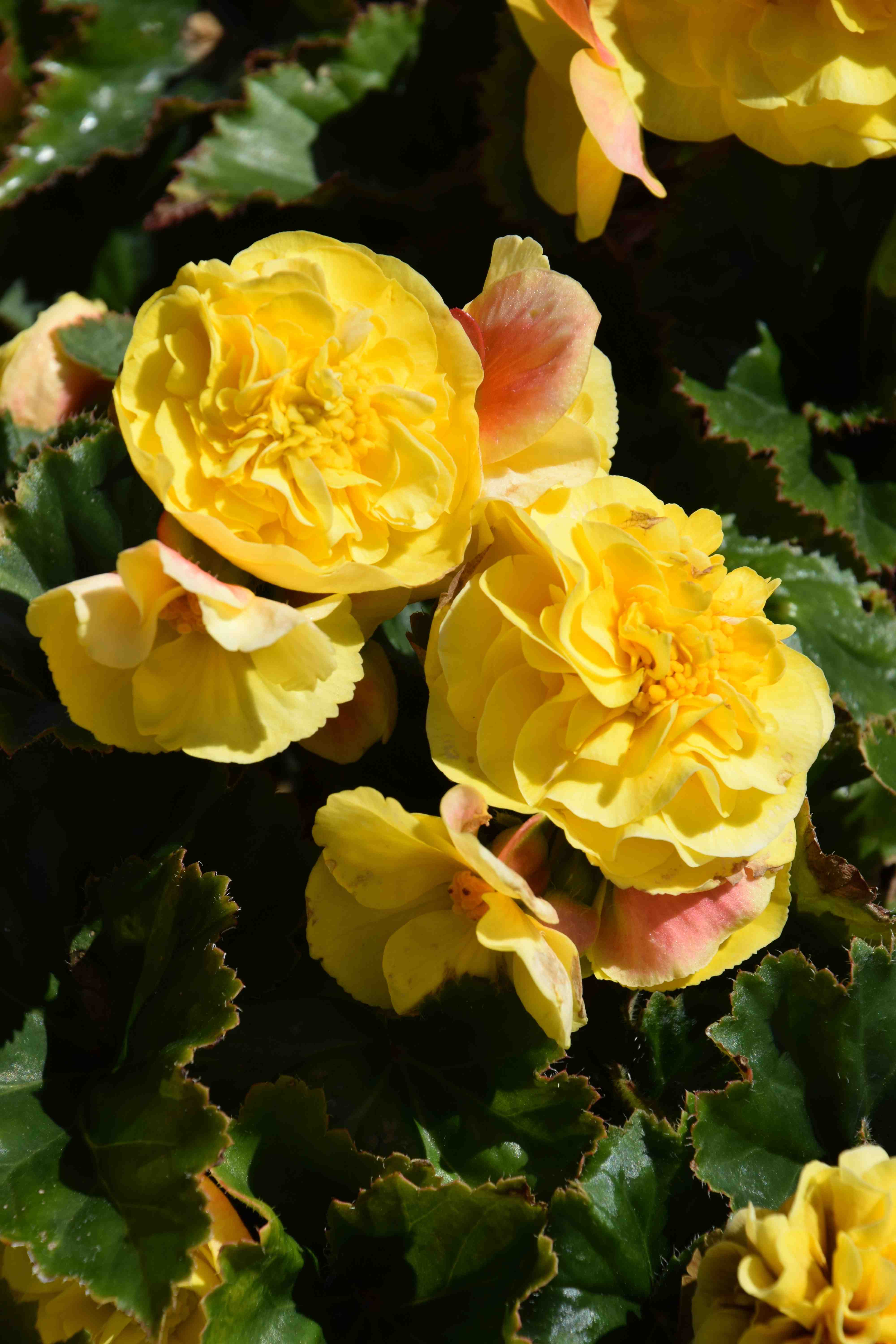
Look along the racks of summer bulbs at Nags Hall and you will see lots of begonias. Unlike the lilies I discussed last week, begonias are a bit more complicated, though they are not difficult to grow. Please bear with me!
Begonias are a big group of plants and they vary from shrubby houseplants grown for their lovely foliage, to the tuberous kinds I will be discussing today. Yes, these are not bulbs at all, but knobbly, brown, hairy tubers. Our summer begonias include these large-flowered, showy plants and the fibrous-rooted, small flowered kinds. The latter are usually grown from seed and are usually compact, with shiny leaves and small flowers in shades of pink, red and white. The leaves can be green or purple. Although they are strictly perennial and you can keep them from one year to another if you keep them warm in winter (above 10c), they are usually grown from seed every spring. This is what they look like –

But, back to our tuberous begonias in packs. These large-flowered kinds, which usually have double flowers, are available in all colours, apart from purple and blue, and are ideal for patio pots. Some have a weeping habit, making them perfect for baskets and window boxes. Apart from the beauty of the flowers, what makes begonias special is that they get bigger all summer and they will flower right through autumn until stopped by frost.
These tubers should be started in warmth before they are planted in the garden. They are killed by frost so you can’t put them outside till late May. But you can start them indoors now so the plants are well established by planting time. Remove the tubers from the bag and plant them in small pots (about 8-10cm across – 3-4in). You can use multipurpose compost and then keep them on the windowsill to sprout. Cover the tubers with about 5mm (1/4in) of compost. The problem is that there is an up-side and a down-side and the shoots grow from one side only. So you don’t want to put them in the wrong way up.
If the tubers have started to sprout you will see pink shoots on one side and these should be facing upwards. Old tubers are usually concave on the upper side and smoother – and more hairy on the underside. But the tubers in packs are usually young and don’t have an obvious top and bottom. If this is the case pop them in a plastic bag with some moist compost or perlite and place them in a warm place, such as the airing cupboard, for a couple of weeks. Then check them and you should see some tiny pink sprouts so you know which way up to plant them.

You can also buy begonias in early summer. These will often be the ‘NonStop’ begonias (above) and these are grown from seed. But they also form tubers and these can be saved for next year. You can grow them from seed yourself but begonias can be tricky to grow from seed. The seeds are tiny and they need warmth for a long time and they have to be sown in January or February if they are to flower well in summer. Growing from tubers is much easier and more reliable.
Next week: Dahlias